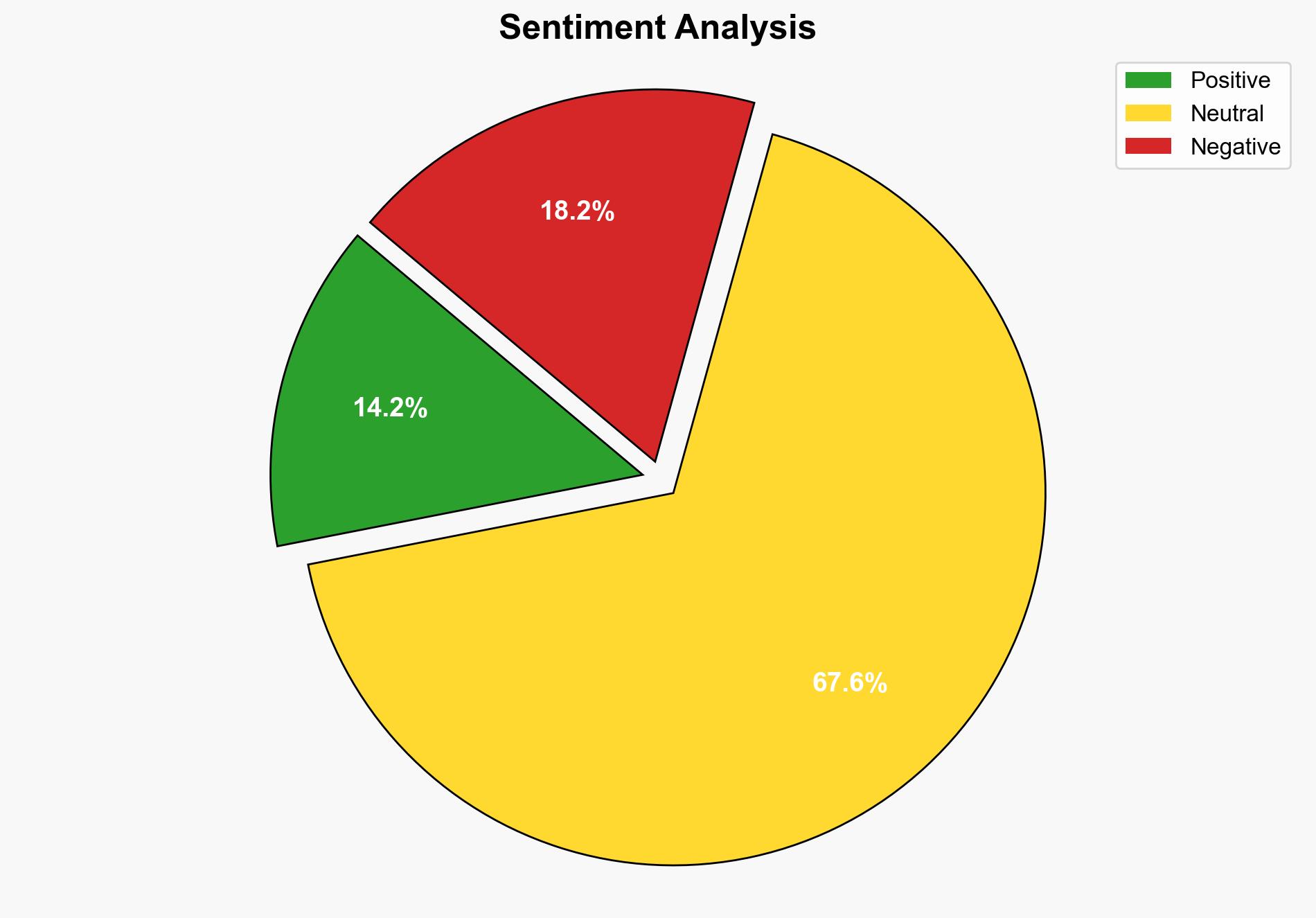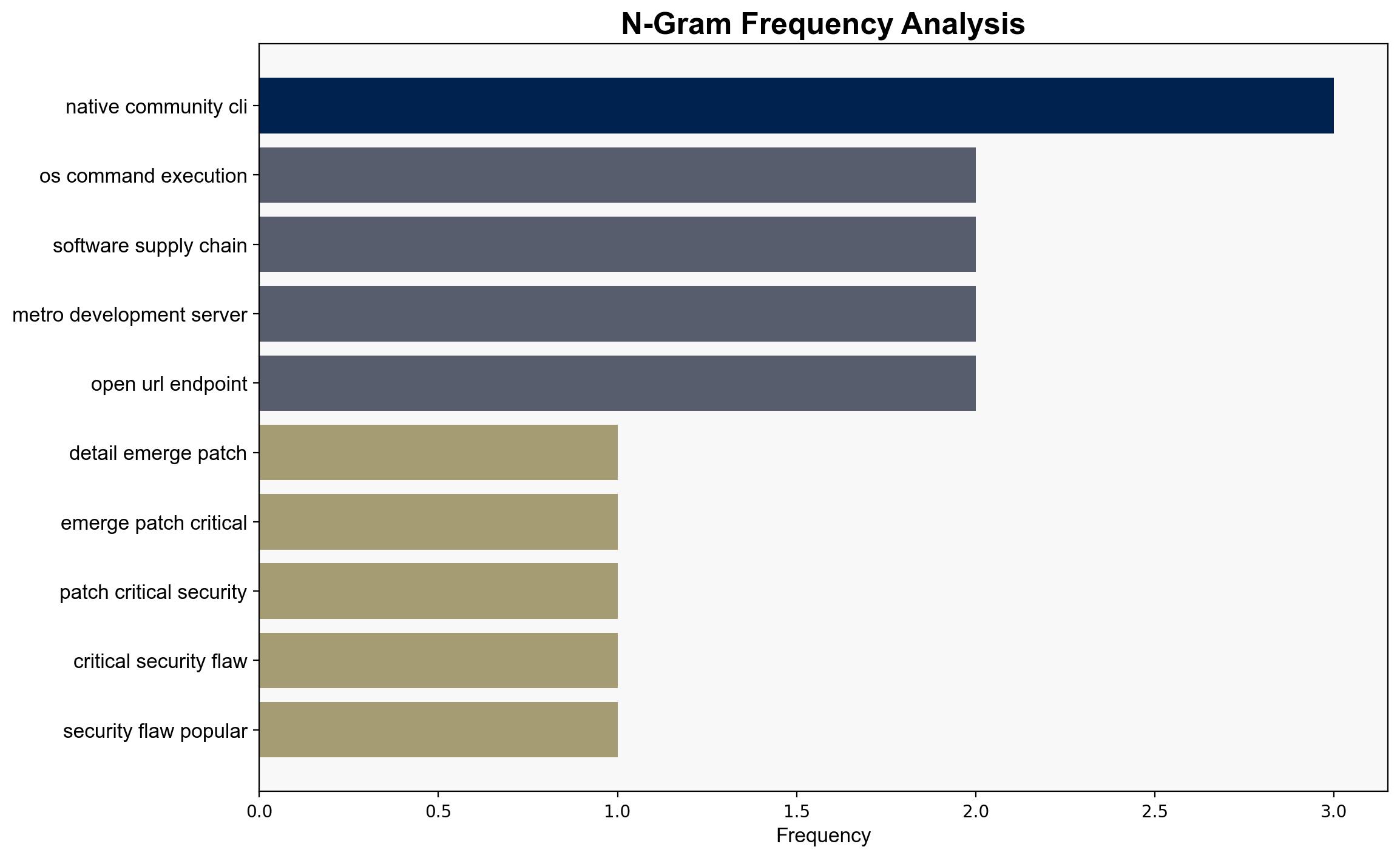Critical React Native CLI Flaw Exposed Millions of Developers to Remote Attacks – Internet
Published on: 2025-11-04
Intelligence Report: Critical React Native CLI Flaw Exposed Millions of Developers to Remote Attacks – Internet
1. BLUF (Bottom Line Up Front)
The most supported hypothesis is that the critical flaw in the React Native CLI poses a significant cybersecurity risk due to its ease of exploitation and the potential for widespread impact. Confidence Level: High. Immediate action is recommended to patch affected systems and conduct comprehensive security audits to prevent exploitation.
2. Competing Hypotheses
Hypothesis 1: The vulnerability in the React Native CLI is primarily a result of inadequate security practices in the software supply chain, leading to a significant risk of exploitation by malicious actors.
Hypothesis 2: The flaw is an isolated incident due to a specific oversight in the development process, with limited potential for exploitation beyond initial reports.
Using the Analysis of Competing Hypotheses (ACH) 2.0, Hypothesis 1 is better supported by the evidence, particularly the high CVSS score, the ease of exploitation, and the broad attack surface. Hypothesis 2 lacks support due to the widespread use of the affected package and the critical nature of the flaw.
3. Key Assumptions and Red Flags
Assumptions include the belief that the patch will effectively mitigate the vulnerability and that developers will promptly update their systems. A red flag is the reliance on self-reported data regarding downloads and patch implementation. There is also a potential blind spot in assuming all developers are aware of the vulnerability and the patch.
4. Implications and Strategic Risks
The flaw could lead to significant economic damage if exploited, affecting businesses relying on React Native for app development. There is a risk of cascading cyber threats if malicious actors use this vulnerability to gain unauthorized access to sensitive data. Geopolitically, widespread exploitation could strain international relations if state-sponsored actors are involved.
5. Recommendations and Outlook
- Immediate dissemination of the patch to all affected users and systems.
- Conduct comprehensive security audits to identify and address similar vulnerabilities.
- Scenario-based projections:
- Best Case: Rapid patch adoption prevents any significant exploitation.
- Worst Case: Delayed patching leads to widespread attacks and data breaches.
- Most Likely: Mixed patch adoption results in isolated incidents of exploitation.
6. Key Individuals and Entities
Pele, a senior security researcher at JFrog, is a key individual involved in identifying and reporting the vulnerability.
7. Thematic Tags
national security threats, cybersecurity, software supply chain, vulnerability management




